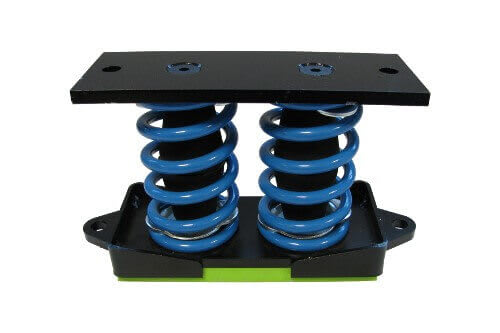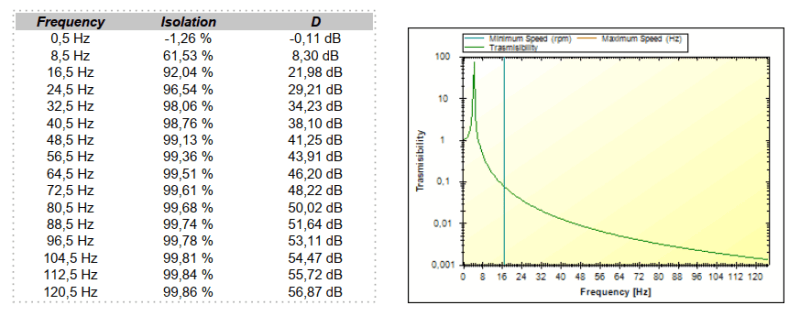trazimcalvina
Mechanical
Hi all,
Recently I was given a task of reducing the spread of vibrations through a welded steel structure. I have attached an image of the structure below. Now the structure is approximately 10 meters long and 3 meters wide, it is supporting a vibrating conveyor whose vibrations are to be prevented from spreading onwards into the steel structure below.
Now I havent had much experience in this kind of work, but after a short internet search two possible solutions immediately came to me. One involved placing Molded Steel Isolation Bearings (rubber pads with steel plates) on top of the vertical columns, or directly beneath the plate connecting the structure with the vibrating conveyor.
The second option involved installing a Restrained Spring Isolator system near the top of the vertical columns, by turning the connection with the horizontal beams into a bolted connection and adding the isolator. I have also added an image of this.
How do these ideas sound to you?
The steel structure:
Isolators in columns
Vibration pads (Molded Steel Isolation Bearings)
Recently I was given a task of reducing the spread of vibrations through a welded steel structure. I have attached an image of the structure below. Now the structure is approximately 10 meters long and 3 meters wide, it is supporting a vibrating conveyor whose vibrations are to be prevented from spreading onwards into the steel structure below.
Now I havent had much experience in this kind of work, but after a short internet search two possible solutions immediately came to me. One involved placing Molded Steel Isolation Bearings (rubber pads with steel plates) on top of the vertical columns, or directly beneath the plate connecting the structure with the vibrating conveyor.
The second option involved installing a Restrained Spring Isolator system near the top of the vertical columns, by turning the connection with the horizontal beams into a bolted connection and adding the isolator. I have also added an image of this.
How do these ideas sound to you?
The steel structure:
Isolators in columns
Vibration pads (Molded Steel Isolation Bearings)


